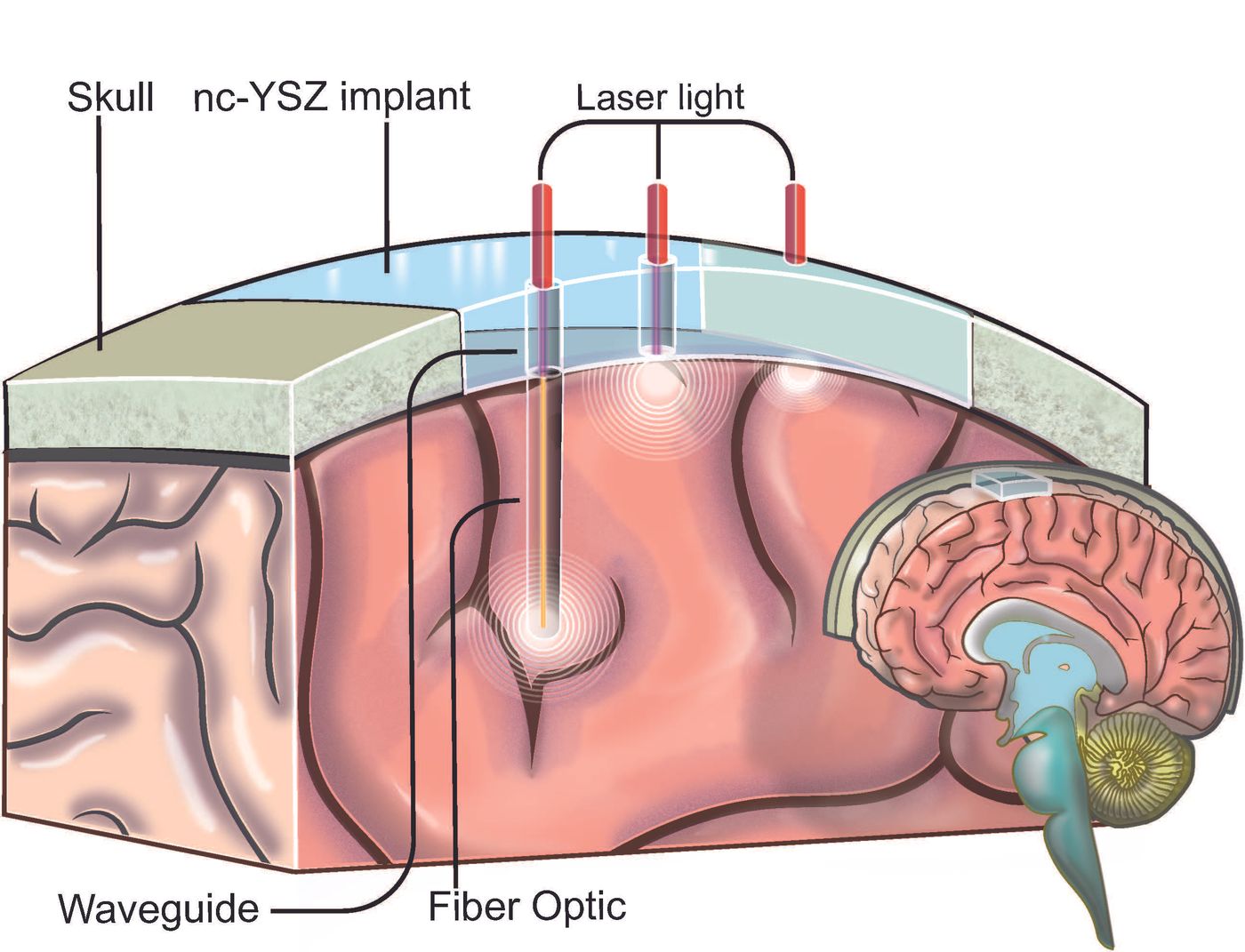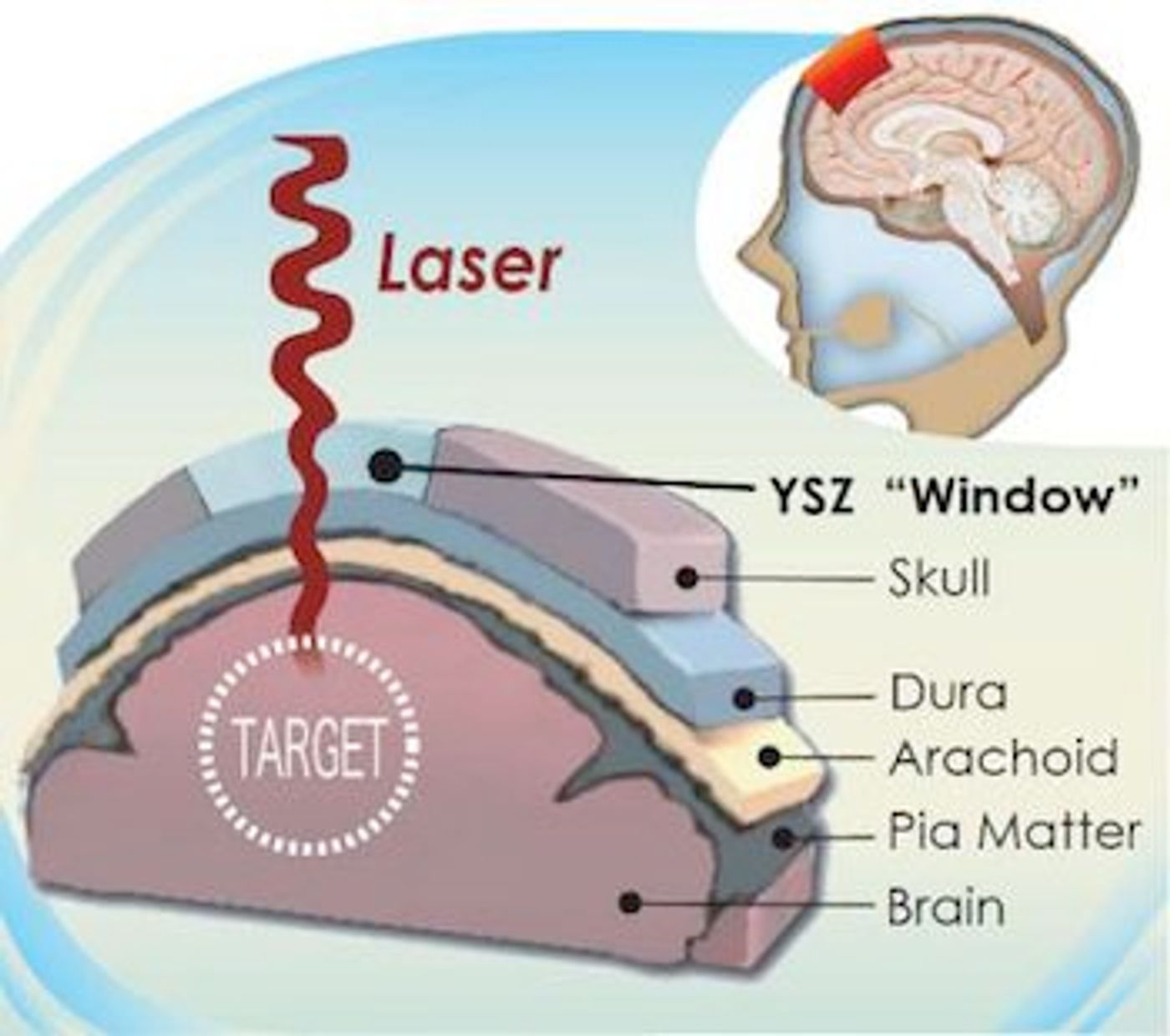Wouldn’t it be nice if brain surgeons had a window to your brain? Well, scientists at the University of California, Riverside (UCR) are taking this expression literally, and they are building just that: a biocompatible “window to the brain.”

To treat brain injuries, brain cancer, and other conditions associated with this organ, surgeons often have to crack open the skull – a procedure known as a craniotomy. This procedure is extremely invasive and high-risk, as the brain is exposed to potential bacteria in the hospital. Indeed, the authors report that "bacterial adhesion to the cranial implant is the leading factor for biofilm formation (fouling), infection, and treatment failure." And for patients who require more than one brain surgery, each repeated craniotomy likely multiplies the odds of infection.

Thus, the purpose of such a clear skull implant is to minimize the number of times surgeons have to open the skull. Using lasers that penetrate the transparent skull implant, surgeons could see their target and treat the condition on demand. The transparent implant could also potentially shorten the surgery time for patients, as the brain is more readily accessible to surgeons.
Though previous researchers have worked towards a transparent skull implant, UCR scientists innovated the use of a new biocompatible ceramic material known as yttria-stabilized zirconia (YSZ). This material has several advantages, one of which is its high impact resistance. This is why YSZ has been commonly used in hip implants and dental crowns. In addition, it’s also why glass, though clear, is not a viable material due to its shatter-prone qualities.
"The YSZ was actually found to be more biocompatible than currently available materials, such as titanium or thermo-plastic polymers, so this was another piece of good news in our development of transparent YSZ as the material of choice for cranial implants," said Guillermo Aguilar, professor of mechanical engineering at UCR's Bourns College of Engineering, and senior author of the study.
But what doctors value even more than its toughness is YSZ’s ability to curb brain infections. In their latest lab tests, the UCR team reported that laser treatment killed
E. coli biofilms on the surface of the YSZ implant, without removing the implant and damaging other tissues.
Given that bacterial biofilms are among the biggest scourges in hospitals, doctors are especially wary about implants in the brain causing infections. Already brain infections are incredibly high risk as many bacteria are fast becoming resistant to antibiotics. And among the antibiotics that still work, some can’t cross the blood-brain barrier. In particular, E. coli is the notorious culprit behind meningitis in patients who have brain surgery.
“This was an important finding because it showed that the combination of our transparent implant and laser-based therapies enables us to treat not only brain disorders, but also to tackle bacterial infections that are common after cranial implants. These infections are especially challenging to treat because many antibiotics do not penetrate the blood brain barrier,” said
Devin Binder, a neurosurgeon and neuroscientist at UCR’s School of Medicine, and a collaborator on the project.
Additional source:
UCR press release

 Thus, the purpose of such a clear skull implant is to minimize the number of times surgeons have to open the skull. Using lasers that penetrate the transparent skull implant, surgeons could see their target and treat the condition on demand. The transparent implant could also potentially shorten the surgery time for patients, as the brain is more readily accessible to surgeons.
Thus, the purpose of such a clear skull implant is to minimize the number of times surgeons have to open the skull. Using lasers that penetrate the transparent skull implant, surgeons could see their target and treat the condition on demand. The transparent implant could also potentially shorten the surgery time for patients, as the brain is more readily accessible to surgeons.







